What is the average conversion rate for dental & medical websites in USA and Canada?
Answer: Average is 4.2 %. However, if your dental or medical website’s conversion rate is more than 5%, you are doing good. 7% to 10% very good. Over 10% is exceptional.

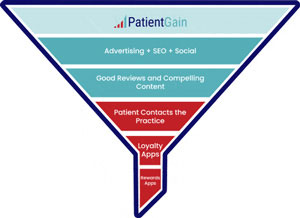
What’s a good conversion rate for dental or medical website?
Based on industry experts,
A) If your conversion rate is more than 5%, you doing good
B) 7% to 10% very good. This is a cause to be happy.
C) Over 10% is exceptional. This is a cause to be nice to your digital marketing staff.
D) Over 20% is rare, and considered to be the top websites. Time to party.
Conversion rates of PLATINUM medical and dental websites are higher. Typically more than 10%
World’s best medical and dental websites are designed for high conversion rates and use AI based strategies to attract and convert new and existing patients. A/B testing on a doctor’s website involves comparing two versions of a webpage to see which performs better in terms of user engagement and conversions. This can help doctors optimize their websites for attracting and retaining patients. A/B testing, also known as split or bucket testing, is a method of comparing two versions of a website to determine which one performs better. In the context of medical websites, A/B testing can be used to optimize various aspects, including usability, navigation, and content, ultimately leading to a better user experience for patients seeking information or services.
Conversion rates of custom medical and dental websites are typically 4.2%
Typically, when medical and dental practices design, build and launch a new website, or improve or modify an existing medical or dental website, they do not go through the rigorous testing required for A/B testing for conversion rates. PatientGain reviewed 329 customers who contacted PatientGain. Not a single website from medical and dental practices had gone through A/B testing. About 94% of the medical and dental practices who contact PatientGain, have an existing website and about 6% of the medical and dental practices who contact PatientGain are new practices and trying to launch their website for their practice. A/B testing for conversions is difficult and expensive task. Hence 99% of the medical and dental practices never bother to go through the A/B testing for conversion rates. They are simply looking at visual aspects and launching. This results in websites that are pretty and attractive to the eye of the beholder, but typically will have a conversion rate of 2% to 4.2%.
Example 1 – General dentist practice – offering dental implants, Invisalign, dentures, cleaning and braces. Located in extremely competitive area of eastern USA. From the figure below, 3601 total patients visited the website. 68 % of the visitors came from SEO (Free clicks). Out of this, 675 new patient leads were generated. Meaning that they called, or booked appointment, redeemed a promotion (cash patients) or sent a text. So this means is that conversion rate is 18.74 % in the month of March. If you scroll down, you can see the average conversion rate.
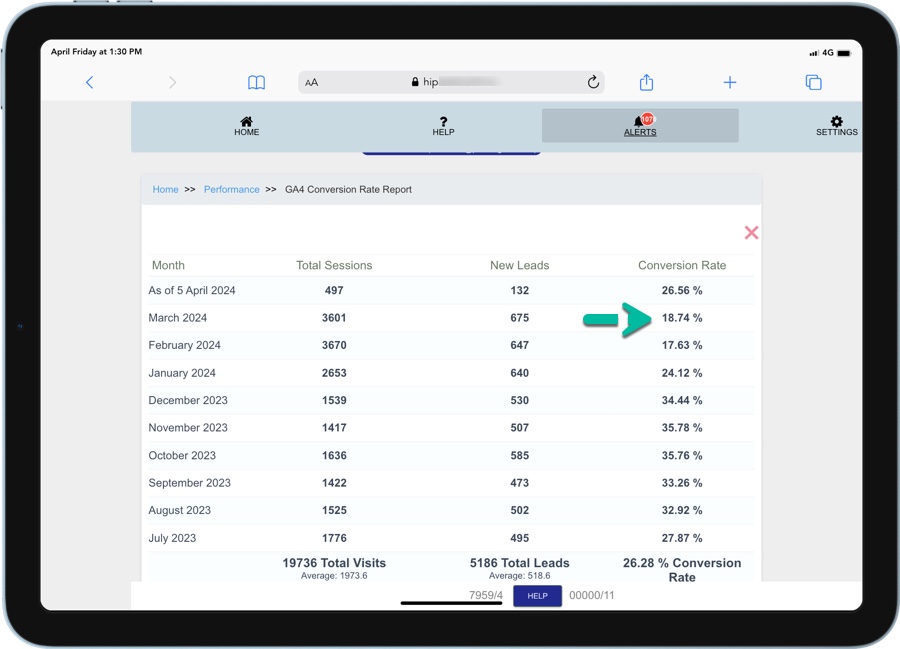
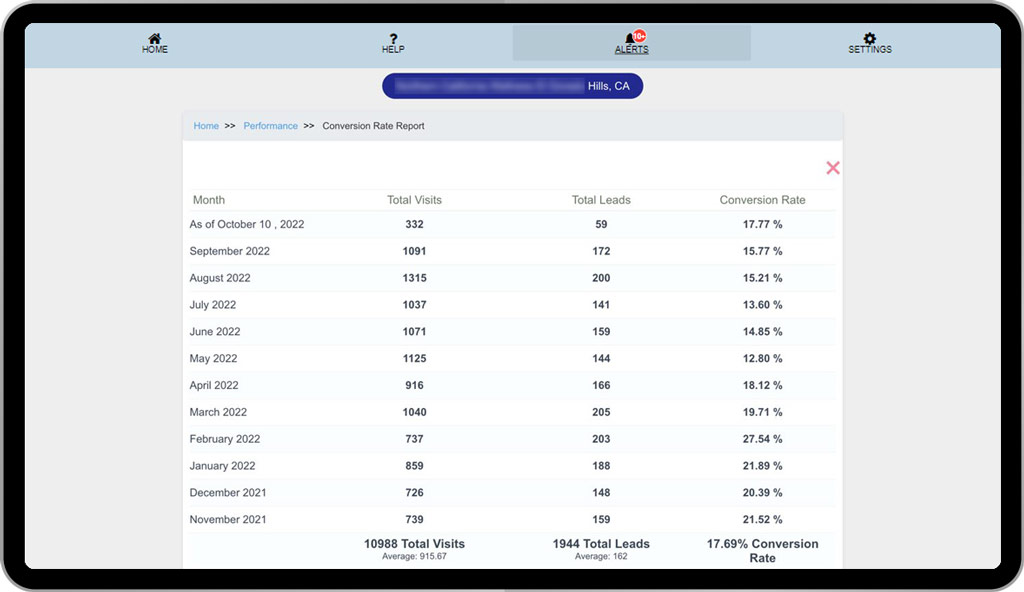
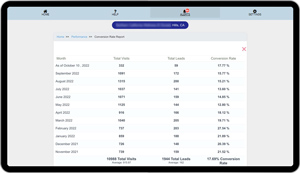
Many doctors and dentists naively believe that once a patient lands on your website, they will automatically take an action to contact you. In real life it does not work like this. Only a percentage of the patients who visit your website, will actually request a an appointment, telemedicine session, or call you.
What is CRO? (Conversion rate optimization)
Conversion rate optimization (CRO) is the process of increasing the percentage of users or website visitors to take a desired action (What is a desired action? It is also called conversion action)
Once a patient lands on your website, then the website has to do the selling. Many doctors and practice managers naively believe that once a patient lands on your website, they will automatically take an action to contact you. In real life it does not work like this. Only a percentage of the patients who visit your website, will actually request a an appointment, telemedicine session, or call you. Fewer will pay you. An even fewer will show up, even with pre-paying you and even with “confirming” the session. It is a human (patient) behavior.
Medical and Dental Website Design and Conversion Go Hand In Hand – They Are 2 Faces of the Same Coin. They Cannot Be Separated.
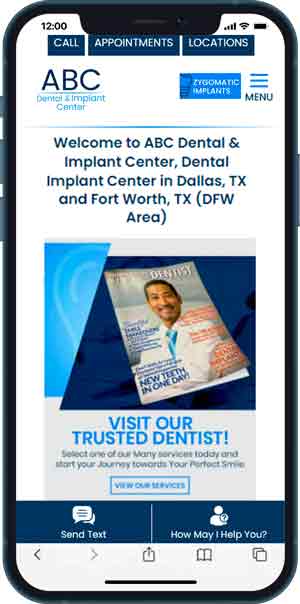
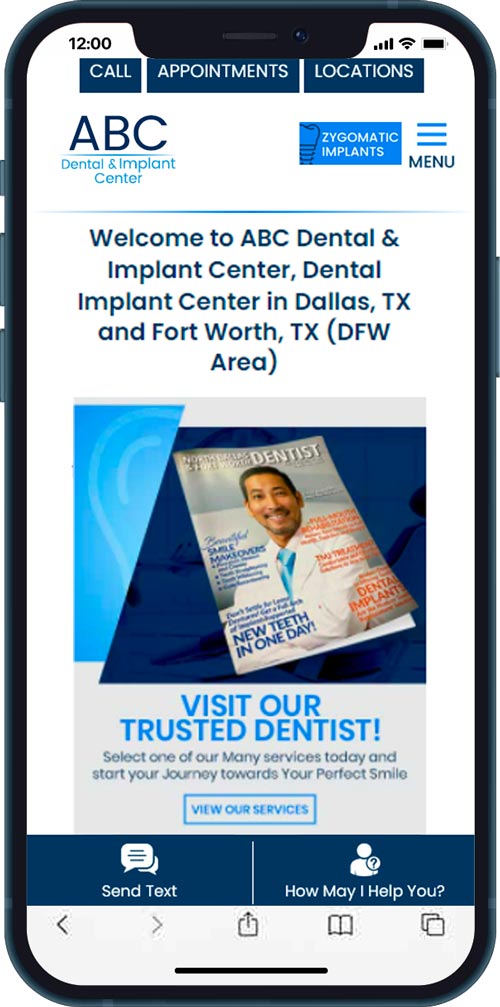
First, let’s explain what is conversion rate?
Conversion rate is:
1f 100 potential patients visit your website, and 13 patients take a “conversion action” from your website, then your conversion rate is 13%
What is a “conversion action” ?
Examples of a conversion action:
1. Patient calling you from the new patient phone number listed on the website
2. Patient requesting a new patient appointment from the website
3. Patient registering for the patient-portal account
4. Patient starting a ChatBot session from the website site, and leaving new patient name, email, phone
5. Patient sending a Text/SMS from the website texting app for a 2-Way texting session
6. Patient clicking on “Directions” app (for an urgent care or a walk in clinic)
7. Patient filling out new patient registration form on the website
8. Patient taking an “assessment” from the online assessment app (offered by PLATINUM service)
9. Medspa client taking a “quiz” from the online quiz app (offered by PLATINUM service)
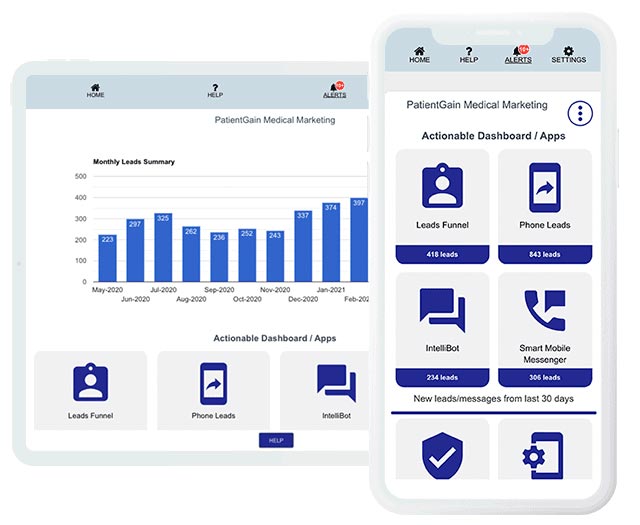
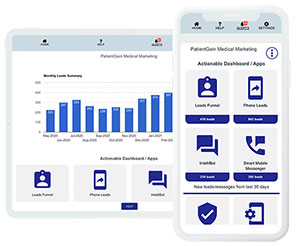
Example 1: use case – addiction medicine practice website conversion rate
In the example below, an addiction medicine practice in the mid-west, using PatientGain PLATINUM service, during the month of August, 334 potential patients visited the website. Out of these, 108 patients took a “conversion action”. Which is 108 new patient leads generated. This number does not include existing patients contacting, these are already excluded. Hence the conversion rate is 32.34 % .
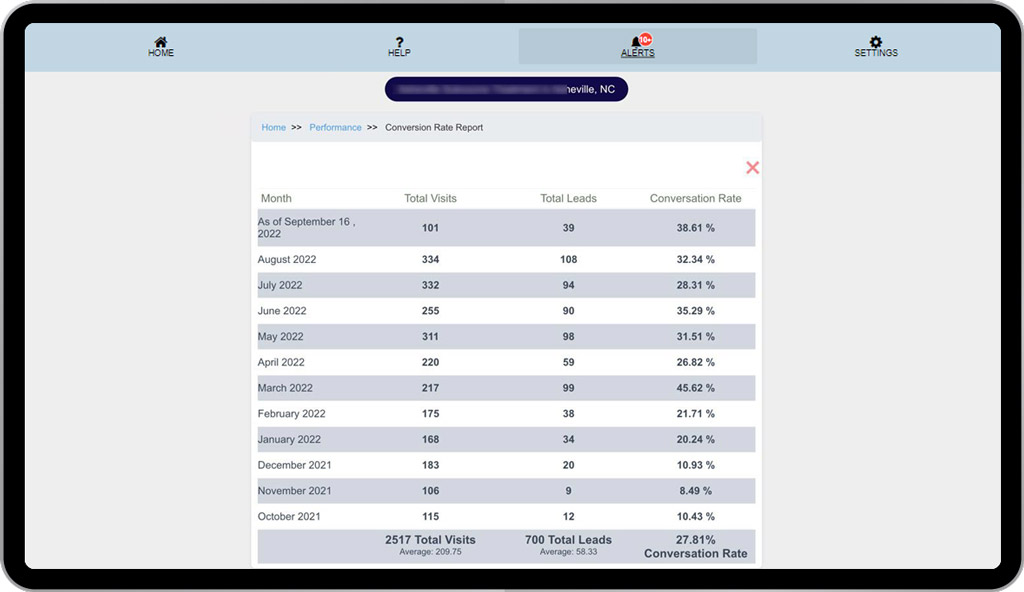
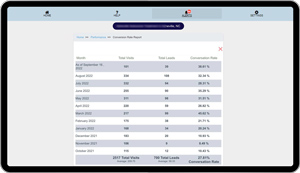
Example 2: use case – Med Spa website conversion rate
In the example below, a medical spa in California, using PatientGain PLATINUM service, during the month of August, 1315 potential patients visited the website. Out of these, 200 patients took a “conversion action”. Which is 200 new patient leads generated. This number does not include existing patients contacting, these are already excluded. Hence the conversion rate is 15.21 % .
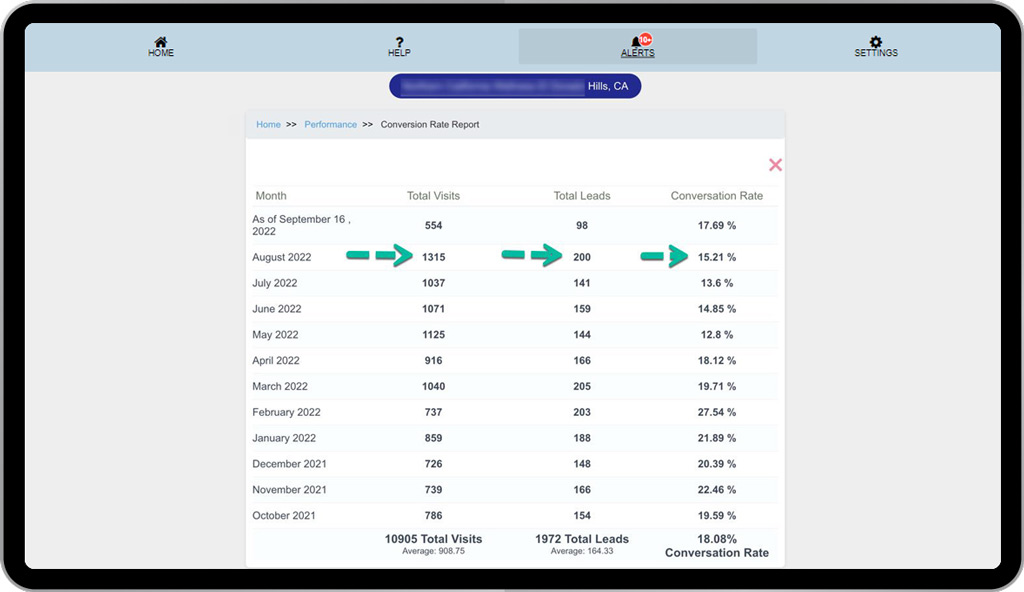
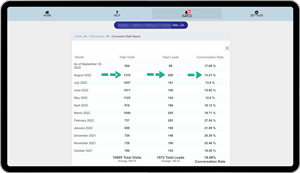
How to Increase Conversions of a Medical Website
For a medical practice, having a medical website is key to their success. In today’s modern world, a business has difficulty functioning without a website to promote it. However, a medical website is not a static marketing property that when launched patients will automatically come bursting through the front door. Some websites will bring many patients to a practice while others will not. A website must convert visitors into patients. Building a website with reasonable conversion rates will help fuel the growth and success of a medical practice.
What is a “conversion” and is a good “conversion rate?”
A conversion is a goal that the medical practice wants to accomplish. For retail businesses, having a customer purchase a product or have an order reaching a certain value amount. Generally, the conversion goal for a medical practice is to have a website visitor make an appointment to become a patient. There may be some other conversion goals that a medical practice may want to keep track of, such as visiting a specific content page or making a phone call to a practice. However, creating an appointment is generally the conversion goal of a medical website.
Based on industry experts, If your medical website conversion rate is more than 5%, you doing good. 7% to 10% very good. Over 10% is exceptional.
The conversion rate is a percentage of success with the goal a medical practice is trying to achieve. For example, if a website received 1,000 visitors and 37 of those visitors made an appointment, the conversion rate would be 3.7%. (Number of appointments divided by the number of website visitors.) What percentage number indicates a good conversion rate is a bit trickier to determine. Good conversion rates will depend on various factors, such as the field of medicine being promoted, competition in the area, and what services are being offered to name a few. For many medical practices, somewhere around 3% to 10% is considered to be good. Again, this varies from practice to practice. If a medical practice wants to increase conversion rates, there are ways to do it, but it is a gradual process. Jumping from 3% to 10% overnight is not a realistic
How can online scheduling help improve conversion on a medical website?
Previously, when patients wanted to make an appointment, they would have to call a medical practice. If it were after hours or no one was available to take the call, they would leave a voice message. The medical practice would then follow up with the patient. This could lead to a phone tag game if the two parties could not connect and find a time that worked for the patient. Making appointments by phone only is a very inefficient way to convert website visitors to patients. Allowing online appointments can greatly help website conversion.
Patients today like to have more control over their healthcare. They are generally more educated today and, with the internet, will research on their own to make better health decisions. Providing patients with the ability to make an appointment online allows them to take the next natural step in their healthcare journey. A potential patient is very likely to visit a medical practice’s website while researching their treatment options. If a medical practice is a good fit, allowing them to immediately make an appointment allows for the conversion to be made. Making a click and filling in some information will be easier and will have fewer friction points than them making a phone call into a medical practice.
For online scheduling to be effective, it needs to be in sync with a practice’s patient management system. This will help prevent double-booking of appointment slots and save staff time by having information automatically copied into the system. To help conversion rates, a medical practice should also place links to online scheduling on practically every page. Ideally, it should be no more than a click away to begin the online scheduling process.
How does a site being mobile-friendly help improve conversion rates?
For a medical practice to successfully convert website visitors into patients, it needs to be mobile-friendly. Doctors may not be aware of this, but most traffic to a medical practice’s website will be from a mobile device. The vast majority of the population has a mobile device with internet access, and mobile internet speeds are just getting faster and faster. Not having a mobile-friendly website optimized for mobile traffic will give competitors a significant, unearned competitive advantage.
A site visited on a mobile device needs to be just as functional and easy to use as it would be on a desktop computer. It needs to provide the same information and same experience to be truly effective. To accomplish this, a medical practice needs a responsive website. This kind of site will automatically rearrange pictures, links, buttons and resize content to be presentable on a mobile device. While the arrangement will be automatic on the phone, a website designer needs to decide how things will be rearranged initially. It needs to be checked to ensure content is not placed out of order or a picture resizes correctly and does not cover anything. However, once completed, a mobile-friendly website will help boost website conversions.
How does website speed impact online conversion?
Today, people want things quickly and efficiently. Just as same-day or two-day shipping trumps waiting four to six weeks for delivery, the quickness of a website will play a significant role in website conversions. Generally, a medical practice’s website only has a few moments to make a good impression and hook viewers to explore a site more in-depth. For every second it takes for a website to load, more and more visitors will click on the back button and looking at other results. A website needs to load quickly if it has a chance to convert a visitor into a patient. A medical practice can see conversion rates plummet if a site takes too long to load.
Why a site will not load quickly can generally be narrowed down to a few usual suspects:
- Pictures Not Optimized For The Web – When sending pictures in to advertise on billboards or to create a brochure, high-resolution files are preferred so printers can produce detailed, quality results. High-resolution photos, however, are generally massive in terms of file size. For a website, a high-resolution image measuring 12 inches by 18 inches is not needed. A website can produce a detailed, crisp picture with a much smaller file size. These pictures will load quickly, catch a website visitor’s attention, and encourage further site exploration.
- Videos Loading Directly To A Website – Videos depicting treatments, introducing doctors, or giving tours of a medical facility are great marketing tools. More and more people consume healthcare information through videos, and well-produced, high-quality videos can be incredible assets to a medical marketing plan. However, these files also tend to be rather large, and it is a mistake to load them directly onto a website. These files take a very long time to load, and if they load every time a site is accessed, it can drag down the site speed. Instead, use a third-party site to upload the videos and then embed them into the website. YouTube is one of the most popular video hosting sites and one that many medical practices use. If a video becomes very popular, it may even start to get some organic ranking itself.
- Behind The Scenes Code Becoming Out Of Date – For as much as a website visitor sees on a site, many technical aspects of a website happen behind the scenes. Various codes will track their movement, and other codes will help move text around or control how pages transition. These codes can break down, become outdated, or interfere with new codes installed onto the site. Any one of these can degrade the overall load speed of a website.
Site speed needs to be constantly monitored. A website that loads quickly one month maybe slow the next month for the reasons mentioned above or other issues. A medical practice needs to continually test the site speed of their website to ensure it is running smoothly. Some site speed issues are easy to fix, while others need to be attended to by a website designer.
Google now measures the speed of your mobile site first. And the speed impacts the SEO ranking and PPC advertising also.
How can a medical engagement chatbot help increase the conversion on a medical website?
Chatbots are becoming increasingly more popular and noticeable on websites both in the healthcare industry and outside. They have been developed over the years to be a handy tool to consumers and help businesses increase their sales. A medical practice should consider using a medical engagement chatbot to boost the conversion on its site.
A medical engagement chatbot is a program that mimics human conversion and engages with people who visit a website. While a chatbot may seem like a real person (and does occasionally fool people), it can only answer the questions programmed into it. It can not formulate answers on its own or hold casual conversion with people. Generally, a chatbot will help website visitors find the information they are looking for or accomplish a simple task, such as getting the address to a practice or making an appointment. This engagement and assistance help prevent website visitors from abandoning their visits and returning to search results.
As for what a medical engagement chatbot can assist with, the best resource to figure that out is a medical practice’s front desk staff. They are often the first to interact with patients and assist them. They can provide a medical practice and web designer a list of the most frequent tasks and questions they have to help with or get asked every day. Hopefully, armed with these questions and answers, a chatbot will help alleviate some phone calls and messages to the front desk staff. While they will not intercept every common question, they should notice a reduction in these simple questions. This will then allow them to concentrate on more complicated problems, improving the overall patient experience for everyone.
One of the significant advantages of a medical engagement chatbot is that it never needs a day off and is always available, unlike human employees. A chatbot is available if a potential patient needs assistance after hours, over holidays, or even in the middle of the night. This engagement can help convert website visitors into patients by encouraging them to make an appointment. Any question a chatbot can not answer it will take the visitor’s contact information and store it on a HIPAA compliant dashboard for staff members to address when business hours resume.
How can a call to action help increase the conversion on a medical website?
Also known as CTAs, a call to action are visual cues on a website that help visitors take the next step in their healthcare journey. If used correctly, a call to action can help achieve a medical practice’s conversion goal. Many calls to action on a website are linked to a medical practice’s goals to accomplish. Many calls to action are placed at the end of content pages or along the sides of websites that scroll along with the website visitor as they begin to explore it. The phrases used on CTA’s are usually short and denote some sort of action. Some of the most commonly used calls to action are:
- Make an appointment
- Call Today
- Directions
- Learn More
- Watch The Video
- Contact Us
As you can see, many of these calls to action can easily be the conversion goals of a website.
- Make an appointment – Monitor how many patients are making appointments.
- Call Today – See how many people click on a button to connect to the front desk.
- Directions – Determine how many people are trying to find out how to visit a facility
- Learn More – Driving people to learn more about a service.
- Watch The Video – Pushing people to watch a video. The video can also provide analytics to show how much of a video visitors are watching.
- Contact Us – Counting how many people follow up with a practice to get more information or ask questions.
Call to actions must be placed carefully throughout a website. They can not be plastered at the end of every paragraph or listed like a menu along the side of a website. A call to action is meant to stand out, so they begin to lose their impact and meaning if too many are used or placed. When determining the conversion goals of a website, a medical practice should consider what call to action will best nudge a website visitor to accomplish that goal.
The experts at PatientGain.com are standing by and ready to assist your medical practice to improve its website conversions. Our seasoned professionals have helped many medical practices across the country and are prepared to help you! We look forward to speaking with your team.
